How Many Oceans There Are in the World and What Their Names Are
How many oceans are there in the world? At one point, scientists used to divide the Global Ocean of the Earth into 4 parts: the Pacific, Atlantic, Indian, and Arctic Oceans. But in the year 2000, the International Hydrographic Organization separated out the fifth ocean — the Southern Ocean. Not all countries recognize its borders, but now, the division of the Global Ocean into 5 parts is de facto used everywhere.
Today, we would like to tell you about the 5 oceans and some curious facts about them.
1. The Pacific Ocean
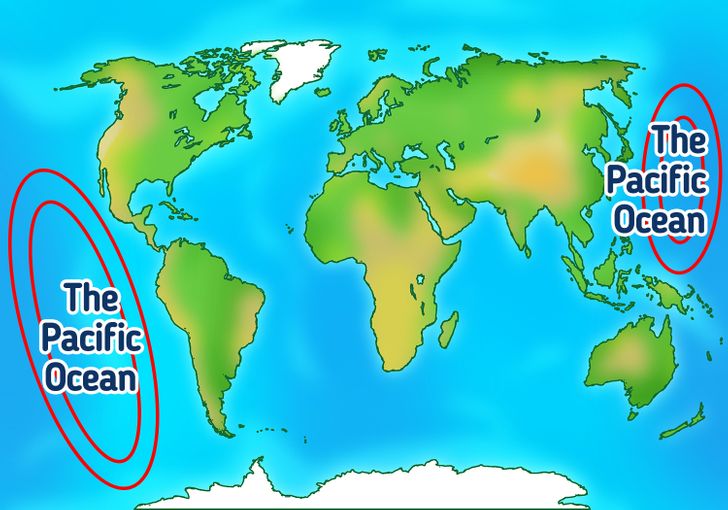
The Pacific Ocean is the largest ocean on the planet. It’s believed that the name was given to it by Ferdinand Magellan. In 1519, he traveled across the Atlantic and, having withstood several storms, entered an unfamiliar ocean in November of 1520. Its waters were unusually calm, so Magellan called it Mar Pacífico which means “peaceful sea.”
The Pacific Ocean stretches from the coast of North and South America to the shores of Australia and Eurasia. Its water area includes the seas that wash the islands of Southeast Asia, as well as the Bering Sea, the Sea of Okhotsk, the Sea of Japan, the South China Sea, and others.
The area of the Pacific Ocean is 63,800,000 square miles, which is 46.6% of the surface of the Global Ocean. Its mean depth is 13,000 feet, and at the deepest point — the Mariana Trench — it reaches 36,037 feet. The Mariana Trench is located next to the Mariana Islands in Micronesia, in the western North Pacific Ocean.
By the way, the Pacific Ocean has most of the islands in the world. There are about 25 thousand of them, including the Galapagos islands, the Kuril islands, the Japanese Archipelago, Sakhalin, New Guinea, New Zealand, Fiji, and Hawaii. Also there are the island regions of Oceania which are Micronesia, Melanesia, and Polynesia.
2. The Atlantic Ocean
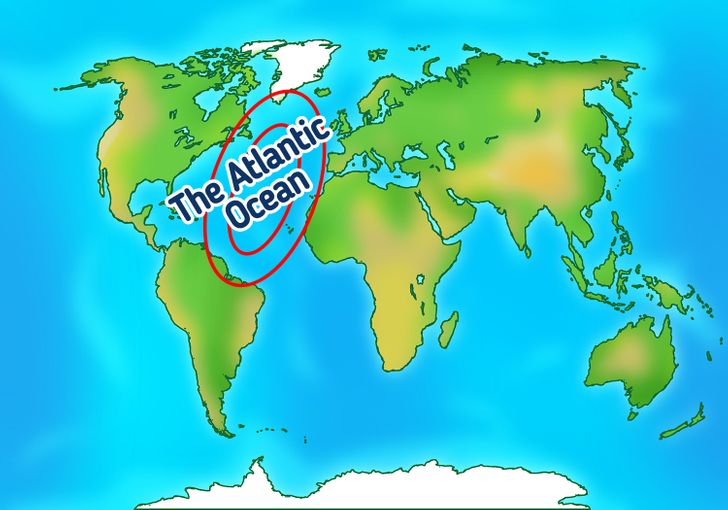
The Atlantic Ocean is the second-largest of the world’s oceans, after the Pacific Ocean. Its name comes from the name of Titan Atlas, who, according to Greek mythology, supported the heavens on his shoulders.
The Atlantic Ocean stretches from the coasts of North and South America in the west to the coasts of Europe and Africa in the east. Thus, it’s a natural border that separates the Old World and New World.
The area of the Atlantic Ocean is 41,100,000 square miles, which is 23.5% of the surface of the Global Ocean. The mean depth is 11,962 feet, and the deepest point is the Puerto Rico Trench, which is located near the island of Puerto Rico. Its depth reaches 27,480 feet.
The Atlantic Ocean includes the Mediterranean Sea, the Caribbean Sea, the Black Sea, the North Sea, the Norwegian Sea, the Baltic Sea, and other seas. There are the British Isles, the Bahamas, Bermuda, the Canary Islands, the Azores, and other islands in its territory, including Iceland and Greenland. Greenland is the largest island in the world.
3. The Indian Ocean
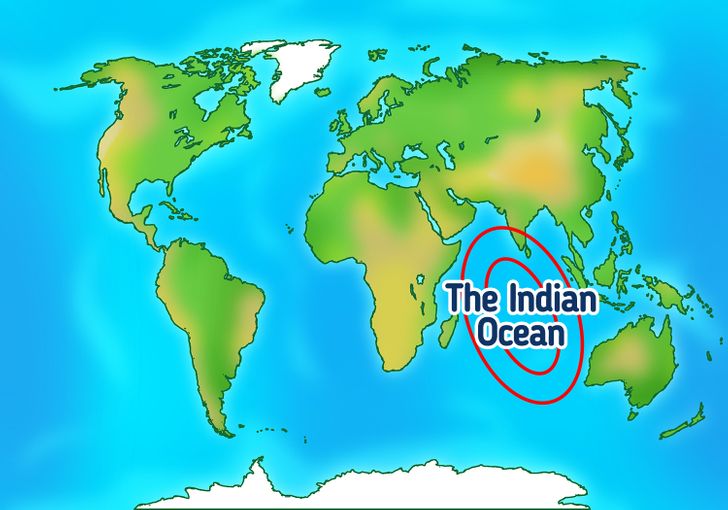
The Indian Ocean is the third largest ocean on the planet. Its area is 27,240,000 square miles or 19.5% of the surface of the Global Ocean. Its borders run from Africa in the west to Australia in the east.
The Indian Ocean is named after India — one of the countries located on its coast. It has been known by this name since at least 1515. It was earlier known as the Eastern Ocean, and one of its seas was the Erythraean Sea.
The mean depth of the Indian Ocean is 12,274 feet, and the Sunda Trench is its deepest point. It stretches from the Lesser Sunda Islands past Java, located between India and Myanmar. The depth of the Sunda Trench reaches 23,920 feet.
The Indian Ocean includes the Red Sea, the Arabian Sea, the Andaman Sea, and other seas, as well as the Gulf of Oman, the Persian Gulf, The Bay of Bengal, and other bays. There are the Maldives, the Andaman Islands, Comoros, Seychelles, and other islands, including Madagascar, Sri Lanka, and Zanzibar in the ocean’s territory.
4. The Arctic Ocean
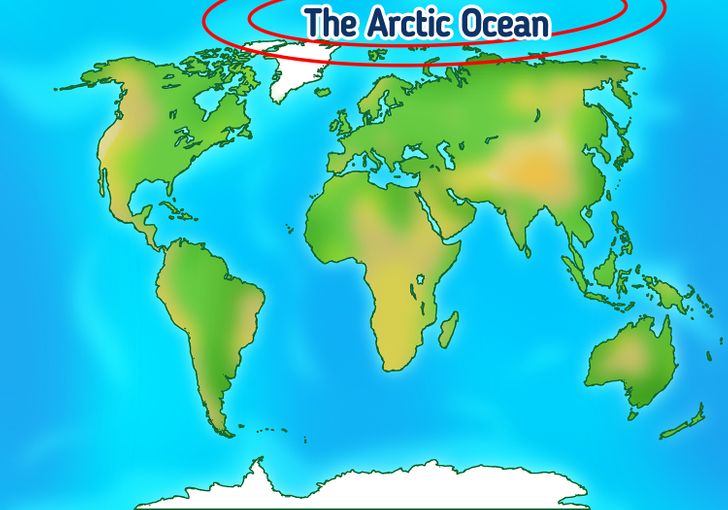
The Arctic Ocean is the smallest of the 5 oceans on the planet. Its area is 5,430,000 square miles. This is only 4.3% of the surface of the Global Ocean. The mean depth is 3,406 feet and the deepest point is Molloy Deep. It reaches 18,210 feet and is located in the Fram Strait, within the Greenland Sea, east of Greenland.
The Arctic Ocean is entirely located in the Northern Hemisphere, between North America and Eurasia. Its water area includes the Barents Sea, the Kara Sea, the Chukchi Sea, the Greenland Sea, and other seas, as well as the Amundsen Gulf. There are Wrangel Island, Novaya Zemlya, Spitsbergen, Franz Josef Land, and other islands in the territory of the ocean, including Greenland, which is bordered by the Arctic Ocean along with the Atlantic Ocean.
5. The Southern Ocean
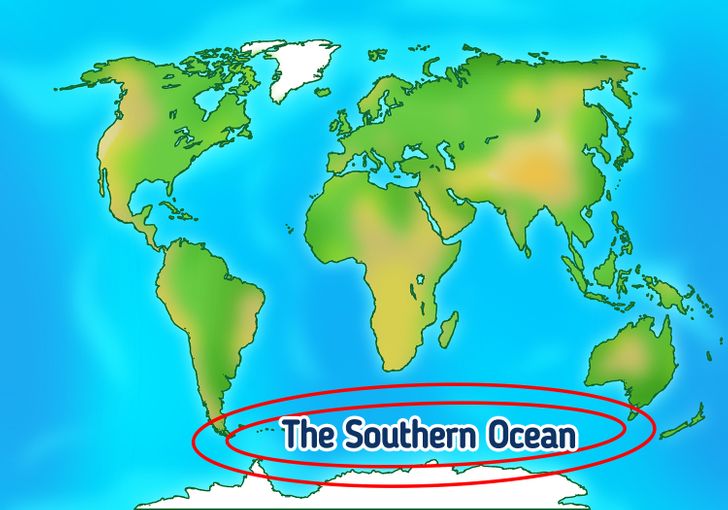
The Southern Ocean comprises the southernmost waters of the Global Ocean encircling Antarctica. The depth varies between 13,000 and 16,000 feet, and the South Sandwich Trench is its deepest point. It is located east of the islands of the same name in the South Atlantic. The depth of the trench is 27,119 feet.
The waters of the Southern Ocean include the Lazarev Sea, the Somov Sea, the Ross Sea, the Weddell Sea, the Cosmonauts Sea, Cooperation Sea, and other seas, as well as part of the Drake Passage.
The area of the Southern Ocean is 8,479,000 square miles, which is 6.1% of the area of the Global Ocean.
Bonus: 15 Fascinating facts about the oceans
- Oceans cover around 70% of the Earth’s surface. Moreover, they represent around 96.5% of all the water in the world.
- The longest mountain range in the world is actually located underwater. The Mid-Oceanic Ridge, which extends over 56,000 km, is a mountain range that goes along the very center of the basins in the ocean.
- Around 70% of the oxygen you breathe comes from the oceans.
- The Great Barrier Reef is the largest living structure that can be found in the oceans. It measures about 2,600 km and it’s visible from the Moon.
- Only 5% of the oceans in the world have been explored, so there’s still plenty to be seen.
- The oceans can be considered our planet’s biggest museum as there are more historical objects in it than in all the museums on the planet.
- The ocean acts like our planet’s heart as its currents are responsible for circulating vital moisture and heat around the Earth.
- The amount of salt in the oceans is enough to cover the entire surface of our planet.
- We don’t know the exact number of living creatures that inhabit the oceans.
- The oceans are home to around 94% of the world’s wildlife.
- The sun is responsible for the blue color of the oceans.
- 90% of the world’s volcanic activity occurs in the oceans.
- Coral reefs cover 1% of the oceans.
- In the oceans, we can find over 400 different types of sharks.
- Coral makes its own sunblock by creating coral fluoresce, which protects the algae in coral.
Do you know any other fun facts about the ocean? Did you know that there were this many oceans on our planet? Tell us in the comments!